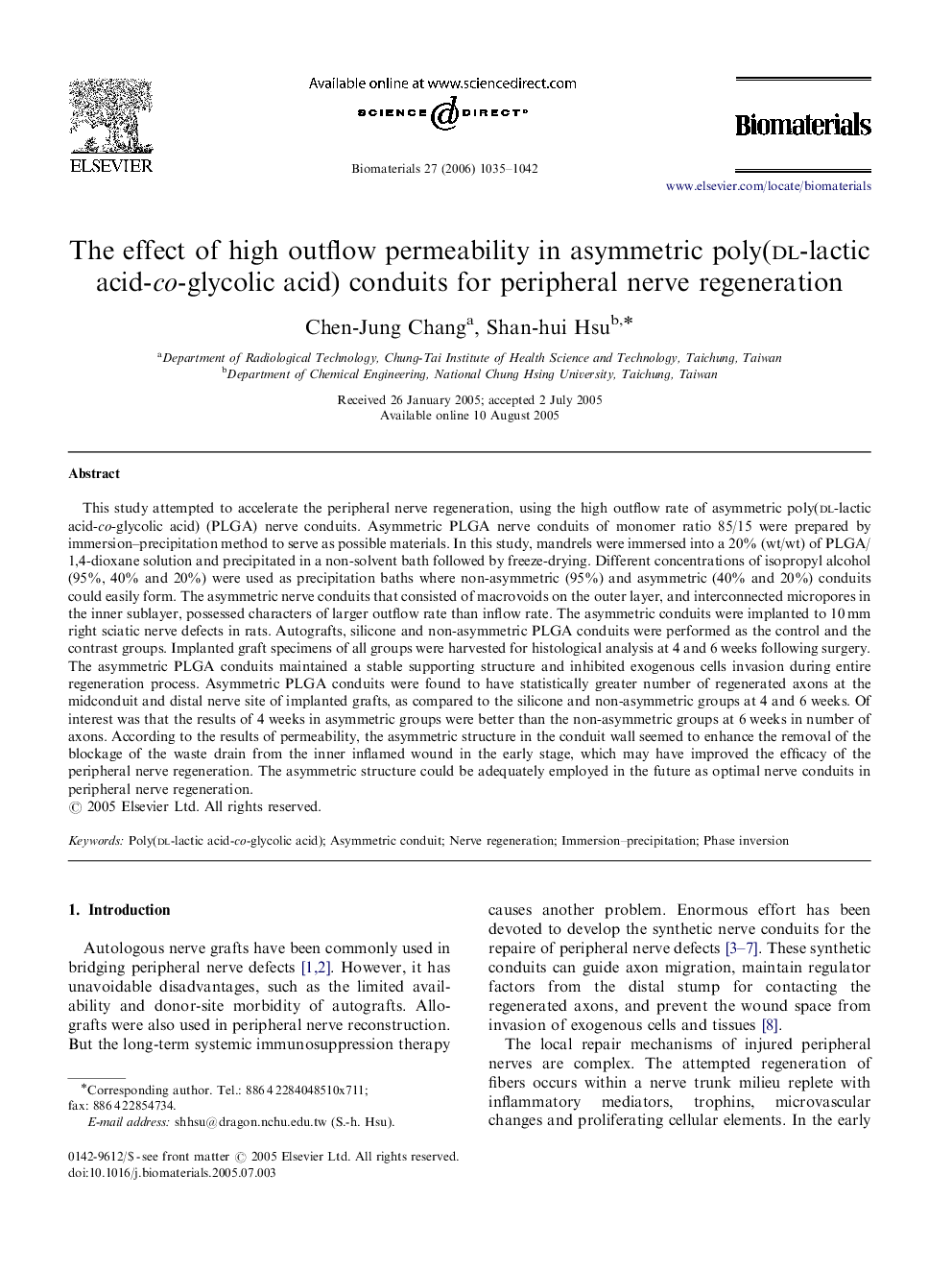| کد مقاله | کد نشریه | سال انتشار | مقاله انگلیسی | نسخه تمام متن |
|---|---|---|---|---|
| 12191 | 784 | 2006 | 8 صفحه PDF | دانلود رایگان |

This study attempted to accelerate the peripheral nerve regeneration, using the high outflow rate of asymmetric poly(dl-lactic acid-co-glycolic acid) (PLGA) nerve conduits. Asymmetric PLGA nerve conduits of monomer ratio 85/15 were prepared by immersion–precipitation method to serve as possible materials. In this study, mandrels were immersed into a 20% (wt/wt) of PLGA/1,4-dioxane solution and precipitated in a non-solvent bath followed by freeze-drying. Different concentrations of isopropyl alcohol (95%, 40% and 20%) were used as precipitation baths where non-asymmetric (95%) and asymmetric (40% and 20%) conduits could easily form. The asymmetric nerve conduits that consisted of macrovoids on the outer layer, and interconnected micropores in the inner sublayer, possessed characters of larger outflow rate than inflow rate. The asymmetric conduits were implanted to 10 mm right sciatic nerve defects in rats. Autografts, silicone and non-asymmetric PLGA conduits were performed as the control and the contrast groups. Implanted graft specimens of all groups were harvested for histological analysis at 4 and 6 weeks following surgery. The asymmetric PLGA conduits maintained a stable supporting structure and inhibited exogenous cells invasion during entire regeneration process. Asymmetric PLGA conduits were found to have statistically greater number of regenerated axons at the midconduit and distal nerve site of implanted grafts, as compared to the silicone and non-asymmetric groups at 4 and 6 weeks. Of interest was that the results of 4 weeks in asymmetric groups were better than the non-asymmetric groups at 6 weeks in number of axons. According to the results of permeability, the asymmetric structure in the conduit wall seemed to enhance the removal of the blockage of the waste drain from the inner inflamed wound in the early stage, which may have improved the efficacy of the peripheral nerve regeneration. The asymmetric structure could be adequately employed in the future as optimal nerve conduits in peripheral nerve regeneration.
Journal: Biomaterials - Volume 27, Issue 7, March 2006, Pages 1035–1042